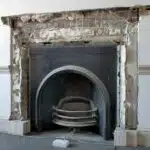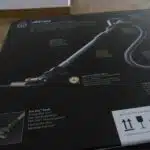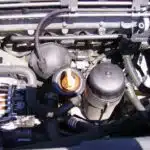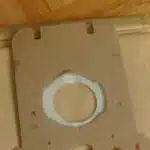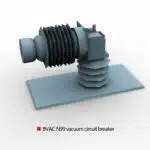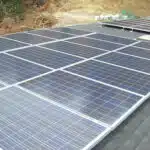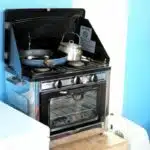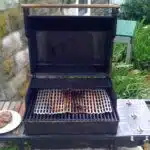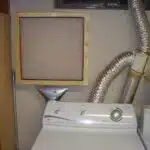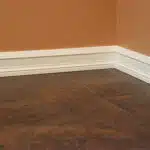If you are a proud owner of a gas fireplace, it is essential to know how to clean it properly. A clean fireplace not only ensures the efficient functioning of the appliance but also safeguards your home from potential fire hazards. Cleaning a gas fireplace may seem like a daunting task, but with proper guidance and tools, it can be done easily and effectively. As an expert in gas fireplace maintenance, I have compiled some tips on how to clean your gas fireplace the right way.
Firstly, before starting the cleaning process, turn off the gas supply and let the appliance cool down completely. Once it has cooled down, remove all accessories such as logs and grates from the fireplace. Using a vacuum cleaner with an attachment for cleaning ash and soot is an effective way to remove loose debris from inside the appliance. Additionally, use a soft-bristled brush or cloth to wipe away any remaining dirt or debris from the walls and corners of the fireplace. By following these simple steps, you can ensure that your gas fireplace remains in excellent condition while keeping your home safe and warm during cold weather months.
Importance Of Proper Gas Fireplace Maintenance
A gas fireplace is a beautiful and functional addition to any home. It provides warmth, ambiance, and comfort during the colder months. However, many homeowners neglect proper maintenance of their gas fireplaces. This can result in costly repairs, reduced efficiency, and even safety hazards.
Benefits of regular gas fireplace maintenance include increased heating efficiency, improved air quality, and prevention of potential health hazards from carbon monoxide buildup. In addition to these benefits, proper maintenance can also extend the lifespan of your gas fireplace and save you money on repairs in the long run.
Costs associated with gas fireplace maintenance vary depending on the extent of the work needed. However, it is important to remember that neglecting maintenance can result in much higher costs due to more extensive repairs or even replacement of the entire unit. By investing in regular upkeep for your gas fireplace, you are not only ensuring its longevity but also prioritizing the safety and wellbeing of those who enjoy its warmth in your home.
Understanding your gas fireplace is crucial for maintaining its functionality and safety. In the next section, we will explore key elements to consider when cleaning a gas fireplace.
Understanding Your Gas Fireplace
- Gas fireplaces are available in both direct vent and vent-free designs, each of which require different types of maintenance.
- Gas fireplaces offer convenience and efficiency compared to traditional wood burning fireplaces, allowing them to be used as a primary heat source in some homes.
- It is important to understand the type of gas fireplace you have and the manufacturer’s instructions for proper maintenance to ensure safe operation.
- Regularly inspect the exterior of the gas fireplace for any signs of damage and check the interior for debris or soot buildup.
- Clean the interior of the gas fireplace regularly by using a vacuum to remove debris or a damp cloth for soot.
- Make sure to turn off the gas supply before performing any maintenance on your gas fireplace to ensure the safety of anyone in the area.
Types Of Gas Fireplaces
As a gas fireplace maintenance expert, it’s important to understand the different types of gas fireplaces that are available on the market. There are three main types of gas fireplaces: inserts, freestanding stoves, and built-in units. Each type has its own pros and cons that homeowners should be aware of before making a purchase.
Inserts are designed to be installed into an existing wood-burning fireplace. They’re more cost-effective than other types of gas fireplaces and provide excellent heat output. However, they require an existing chimney and may not be suitable for all homes.
Freestanding stoves are a great option for homeowners who want the look and feel of a traditional wood-burning stove without the hassle of chopping wood or cleaning up ash. They come in a variety of styles and sizes to fit any home decor. However, they can be more expensive than inserts and require professional installation.
Built-in units offer a sleek and modern look that’s perfect for contemporary homes. They’re easy to install and require little maintenance. However, they can be expensive compared to other types of gas fireplaces and may not provide as much heat output as inserts or freestanding stoves.
In conclusion, understanding the different types of gas fireplaces is key to maintaining your unit properly. By knowing the pros and cons of each type, you can make an informed decision when purchasing a gas fireplace for your home.
Benefits Of Gas Fireplaces
Understanding the different types of gas fireplaces is essential, but it’s equally important to recognize the benefits of owning a gas fireplace. Gas fireplaces have several advantages over traditional wood-burning fireplaces. For one, they’re more energy-efficient and provide heat much quicker than wood-burning units. Additionally, gas fireplaces don’t produce any smoke or ash, which means homeowners won’t have to worry about cleaning up after every use.
When comparing gas fireplaces to electric or wood-burning units, gas fireplaces are often the preferred choice due to their convenience and low maintenance requirements. Unlike wood-burning fireplaces that require constant attention and cleaning, gas fireplaces can be turned on and off with a simple switch or remote control. They also don’t require any fuel storage or transportation like traditional wood-burning stoves.
Another significant advantage of owning a gas fireplace is their versatility in design. Gas fireplaces come in various styles and sizes to fit any home decor. Whether you’re looking for a modern built-in unit or a traditional freestanding stove, there’s a gas fireplace available that will suit your needs perfectly.
In conclusion, understanding the benefits of owning a gas fireplace is just as crucial as knowing the different types available on the market. The advantages of gas fireplaces include energy efficiency, low maintenance requirements, and versatile designs. By considering these benefits when making your purchase decision, you can ensure that you choose the best type of gas fireplace for your home.
Safety Tips For Gas Fireplaces
As a gas fireplace maintenance expert, it’s essential to discuss gas fireplace safety tips and precautions with homeowners. Gas fireplaces offer several benefits, including energy efficiency, low maintenance requirements, and versatile designs. However, homeowners must also understand the potential hazards that come with owning a gas fireplace.
One of the most critical safety tips for gas fireplaces is proper handling and storage of gas cylinders. Gas cylinders should always be stored in a well-ventilated area away from any heat sources or direct sunlight. Homeowners should also ensure that the cylinder valve is turned off when not in use and never store a cylinder indoors.
Another crucial safety precaution is ensuring that your gas fireplace is installed correctly. Improper installation can lead to gas leaks or fires, which can cause significant damage to your home. It’s essential to have your gas fireplace installed by a professional who can ensure that all connections are secure and up to code.
In conclusion, understanding gas fireplace safety tips and precautions is vital for homeowners who own or plan to purchase a gas fireplace. Proper handling and storage of gas cylinders and ensuring correct installation are just two of many ways homeowners can keep their homes safe. As a gas fireplace maintenance expert, I highly recommend following these safety guidelines to enjoy all the benefits of owning a gas fireplace without compromising on safety.
Tools Needed For Cleaning Your Gas Fireplace
To properly clean your gas fireplace, you will need the right tools. There are a few essential items that you should have on hand before beginning the cleaning process. The first item is a vacuum cleaner with a hose and brush attachment. This will allow you to remove any loose debris and dust from the fireplace.
Another important tool is a set of brushes specifically designed for cleaning gas fireplaces. These brushes come in different sizes and shapes to ensure that you can reach every part of the fireplace interior. Some common types of brushes include chimney brushes, flue brushes, and wire brushes.
When it comes to cleaning solutions, there are several options available. One popular choice is a solution made from equal parts water and vinegar. This natural solution is effective at breaking down soot and other residues in your fireplace without leaving behind any harmful chemicals or odors. You can also purchase commercial cleaning solutions specifically formulated for gas fireplaces.
Additional Tips:
- Always wear protective gloves when handling cleaning products.
- Avoid using abrasive materials that may scratch or damage the surfaces of your gas fireplace.
- Clean your gas fireplace regularly to prevent buildup and avoid potential hazards such as carbon monoxide poisoning.
As an expert in gas fireplace maintenance, it’s important to stress the significance of turning off the gas supply before starting any cleaning task within your unit. Neglecting this step may lead to accidents and injuries as well as damage to your system’s components. Therefore, always ensure that the gas supply is turned off before commencing with any form of maintenance activity within your gas fireplace unit.
Turning Off The Gas Supply
Like a pilot skillfully maneuvering an aircraft to the runway, turning off the gas supply of a fireplace should be done with caution. Gas supply precautions are necessary to avoid accidents and ensure safety. Before starting any cleaning or maintenance procedure, it is important to turn off the gas supply safely.
To turn off the gas supply, locate the shut-off valve near the fireplace. The valve may be located on the floor or wall behind a panel or grate. Once you locate it, turn it counterclockwise until it stops. This will cut off the gas flow to your fireplace. If you are having trouble finding the shut-off valve or turning it off, contact a professional for assistance.
It is important to note that gas leaks can be dangerous and even deadly if not handled properly. If you smell gas or suspect a leak, do not attempt to turn off the gas supply yourself. Leave your home immediately and call your local fire department or gas company for help. It is always better to err on the side of caution when dealing with potential gas leaks.
Before moving on to further cleaning procedures, allow the appliance to cool down completely. This will ensure that no accidental fires occur during cleaning and maintenance procedures. Once cooled down and with proper precautions taken, proceed with confidence in maintaining your gas fireplace effectively and safely.
Allowing The Appliance To Cool Down
After turning off the gas supply, it is essential to allow the appliance to cool down before starting the cleaning process. This step is crucial as touching a hot surface can result in severe burns. Safety should always be the top priority when handling a gas fireplace.
Once the appliance has cooled down, it is time to remove any accessories such as logs, grates or screens. Proper handling of fireplace accessories is vital as they can be fragile and easily damaged if not handled with care. Remove them gently and place them aside on a soft cloth or towel to avoid scratching or breaking them.
After removing all accessories, it’s time to clean the interior of the fireplace. Here are some steps you can follow for effective cleaning:
- Use a vacuum cleaner with an extension hose attachment to remove any loose debris like soot, dust or ash from inside.
- Dip a soft-bristled brush into warm water mixed with mild detergent and start scrubbing gently on areas that have stubborn stains.
- Wipe everything down carefully using a damp cloth, ensuring that every nook and cranny gets cleaned.
- Finally, replace all accessories back into their proper positions once you’re satisfied that everything has been cleaned thoroughly.
Before moving onto the next section, always remember that safety should come first when cleaning your gas fireplace. Follow these steps carefully and handle all accessories with care to avoid any damage or injury during this process.
Removing Accessories From The Fireplace
As the famous adage goes, “Cleanliness is next to godliness.” And when it comes to maintaining your gas fireplace, removing accessories is an essential step in ensuring its cleanliness. Start by disconnecting the gas supply and wait for the fireplace to cool down before removing any of the accessories.
Before proceeding with removing any of the accessories from your gas fireplace, ensure that you have protected the surrounding area. Put down a drop cloth or plastic sheeting around the fireplace to catch any debris or dust that may fall during the cleaning process. This will help keep your floors and furniture clean while also making it easier to clean up after.
Once you have taken necessary precautions in protecting the surrounding area, carefully remove all of the accessories from your gas fireplace. These would typically include logs, grates, embers, and any other decorative items that may have accumulated over time. Be gentle while handling these items, as they can be fragile. Once you remove all of them, place them on top of a piece of newspaper or a drop cloth so that they do not leave behind any ash or debris.
As mentioned earlier, removing accessories is a crucial step in keeping your gas fireplace clean. But simply removing them is not enough; it’s also important to use a vacuum cleaner to remove loose debris from inside the fireplace before proceeding with further cleaning steps. In the next section, we’ll take a look at how to use a vacuum cleaner effectively while cleaning your gas fireplace.
Using A Vacuum Cleaner To Remove Loose Debris
Loose debris such as dust, dirt, and ashes can accumulate in your gas fireplace over time. These particles can compromise the efficiency of your fireplace and even pose a fire hazard if they come into contact with the flames. Using a vacuum cleaner attachment is an effective way to remove loose debris from your gas fireplace.
Before you begin cleaning, it is important to take safety precautions. Turn off the pilot light and allow the fireplace to cool down completely before starting. To prevent any damage or scratches to the interior of your fireplace, use a soft-bristled vacuum cleaner attachment. Do not use a regular vacuum cleaner hose as this may cause damage to the delicate components of your gas fireplace.
Once you have ensured that all safety precautions are taken care of, use the vacuum cleaner attachment to carefully remove any loose debris from inside your gas fireplace. Start at the top and work your way downwards, being thorough but gentle so as not to damage any parts of the interior. Take care when reaching around corners or tight spaces to ensure you do not accidentally bump into any sensitive components. By using this method regularly, you can help maintain the optimum performance of your gas fireplace for many years.
Transition: Once you have removed all loose debris from inside your gas fireplace using a vacuum cleaner attachment, it’s time to move on to wiping away remaining dirt and debris.
Wiping Away Remaining Dirt And Debris
Ah, the joy of wiping away remaining dirt and debris! It’s like the cherry on top of a perfect sundae – satisfying, yet necessary. After all the sweeping and vacuuming, this is where microfiber cloths come in to save the day. These specially-designed cloths are gentle enough not to scratch your fireplace’s surface but tough enough to remove any stubborn grime.
Now let’s talk about cleaning solutions. Please don’t just use any cleaner you have lying around. You want to make sure it’s safe for gas fireplaces. Some cleaners might contain harsh chemicals that could damage your fireplace or cause a fire hazard. Make sure to read the labels carefully before using any cleaning solution on your gas fireplace.
When wiping away remaining dirt and debris, it’s important to remember that less is more. You don’t need to drench your cloth in cleaning solution; a little goes a long way. Once you’ve sprayed some cleaner onto your microfiber cloth, gently wipe down the surfaces of your gas fireplace until all visible dirt and debris are gone. And voilà! Your gas fireplace should now be sparkling clean and ready for use once again.
As we move forward with our maintenance journey, it’s imperative that we shift our focus towards another crucial aspect of gas fireplace upkeep – cleaning the glass front of the fireplace.
Cleaning The Glass Front Of The Fireplace
After wiping away all the remaining dirt and debris, it’s time to clean the glass front of your gas fireplace. Over time, this area can become smudged and stained with soot and other residue. Cleaning it regularly will ensure that you have a clear view of the fire, which is not only aesthetically pleasing but also safer as it allows you to monitor the flames.
To start cleaning the glass front of your gas fireplace, you’ll need to gather some cleaning solutions. There are various types available in the market, but make sure to choose one that is safe for use on gas fireplaces. Avoid using abrasive materials that could scratch or damage the glass. Once you have your cleaning solution ready, spray it onto a soft cloth or sponge and gently wipe down the glass front.
Cleaning the glass front of your gas fireplace is just one step towards maintaining its overall cleanliness. To prevent future buildup, there are some additional actions you can take:
- Regularly clean out the interior of your gas fireplace
- Use a high-quality air filter in your home HVAC system
- Schedule an annual professional cleaning and inspection of your gas fireplace
- Consider installing a chimney cap to prevent debris from entering through the chimney
By following these steps, you can keep your gas fireplace looking great and functioning optimally for years to come. In the next section, we will discuss how to clean another important component – the pilot assembly – which helps keep your fire lit consistently.
Cleaning The Pilot Assembly
To ensure that your gas fireplace functions properly and safely, it is essential to clean the pilot assembly regularly. Cleaning the assembly involves removing debris that may have accumulated over time, causing issues with ignition or flame performance. This section will guide you on how to clean the pilot assembly of your gas fireplace.
To begin cleaning the assembly, turn off the gas supply to prevent any accidental ignition. Then, remove the front panel of your gas fireplace to access the burner and pilot assembly. Carefully disassemble the pilot assembly by unscrewing it from its mount and gently pulling it out.
After removing the pilot assembly, use a soft-bristled brush or compressed air to remove any dirt, dust, or debris from its components. Alternatively, you can use a small amount of rubbing alcohol on a cloth to clean each part thoroughly. Once you have cleaned all parts of the pilot assembly, reassemble it carefully in reverse order and attach it back onto its mount. Afterward, turn on the gas supply again and test for proper ignition and performance.
| Component | Cleaning Solution |
|---|---|
| Pilot Light | Rubbing Alcohol |
| Orifice | Compressed Air |
| Thermocouple | Soft-bristled Brush |
Inspecting and cleaning the burner is crucial in maintaining your gas fireplace’s safety and efficiency. Therefore, once you’ve finished cleaning the pilot assembly, inspecting and cleaning the burner should be your next step. In doing so, you are not only ensuring that your gas fireplace operates correctly but also preventing potential hazards such as carbon monoxide poisoning.
Inspecting And Cleaning The Burner
The burner is a crucial component of your gas fireplace. It is responsible for igniting the gas that creates the flame. As such, it must be inspected regularly to ensure that it functions correctly. Before doing anything else, make sure that the gas supply to your fireplace is turned off. Then, remove the logs and any other objects from the firebox to gain access to the burner.
Start by inspecting the burner closely. Check for any signs of damage or corrosion. If you notice any problems, do not attempt to fix them yourself. Instead, contact a professional technician who can address the issue safely and effectively. Next, use a soft-bristled brush to remove any dust or debris from around the burner ports.
A dirty or clogged burner can reduce your gas fireplace’s efficiency and even create safety hazards. By inspecting and cleaning your burner regularly, you can help ensure that your fireplace operates at peak performance while minimizing risks of accidents or malfunctions. In our next section, we will discuss how to clean the ventilation system thoroughly so that you can enjoy a safe and efficient gas fireplace throughout the year.
Cleaning The Ventilation System
The ventilation system of a gas fireplace is an essential component that requires maintenance to keep the unit running efficiently and safely. Neglecting this aspect can lead to poor air quality, reduced heat output, and even fire hazards. As a gas fireplace maintenance expert, I cannot stress enough the importance of proper ventilation maintenance.
Cleaning techniques for the ventilation system may vary depending on the type of fireplace and its location. However, there are general steps that one can follow. First, you should turn off the gas supply and allow the unit to cool before proceeding with any cleaning tasks. Next, remove any debris or soot buildup from around the vents using a soft-bristled brush or vacuum cleaner. Finally, wipe down the vents with a damp cloth to remove any remaining dirt or grime.
To ensure optimal performance of your gas fireplace’s ventilation system, regular maintenance is crucial. This means scheduling annual inspections by a certified technician who can check for blockages or other issues that may impede airflow. Additionally, homeowners should regularly inspect their vents and chimney caps for signs of damage or deterioration. By following these simple steps and adhering to best practices in ventilation maintenance, you can enjoy your gas fireplace for years to come.
When it comes to ensuring safe operation of your gas fireplace, cleaning the ventilation system is only one step in a comprehensive maintenance routine. In the next section, we will discuss another important aspect: checking for gas leaks.
Checking For Gas Leaks
It is important to check the gas lines of a gas fireplace prior to use. This can be done with a soapy water mixture or a commercial gas leak detector. If a leak is detected, the gas supply should be turned off immediately and the issue should be addressed. Testing for leaks can also be done by listening for hissing or bubbling sounds, or by smelling for gas. Visually detecting a gas leak can also be done by looking for wet spots on the gas line, or by checking the line for frost or ice. It is essential to follow the manufacturer’s instructions when checking your gas fireplace for leaks.
Checking Gas Lines
To ensure that your gas fireplace is safe to use, it’s important to regularly check for gas leaks. One essential step in this process is checking the gas lines. A thorough gas line inspection can help identify any potential issues before they become hazardous.
When inspecting gas lines, it’s crucial to take safety precautions. This includes wearing protective gear such as gloves and safety glasses, ensuring proper ventilation, and turning off the gas supply before beginning the inspection. It’s also important to use a gas leak detector to locate any leaks along the lines.
During the inspection process, carefully examine all visible gas lines for signs of wear or damage. Check for loose connections or fittings and tighten them if necessary. If you notice any significant damage or suspect a leak, it’s best to call a professional technician for further evaluation and repairs. By taking these steps to properly inspect your gas lines, you can ensure that your fireplace is operating safely and efficiently.
Testing For Leaks
As a gas fireplace maintenance expert, ensuring the safety of your gas appliance is of utmost importance. One critical aspect of this is testing for gas leaks. Gas fireplace leak detection is necessary to identify any potential hazards and prevent dangerous situations from occurring.
Testing for leaks should be done regularly and as part of routine maintenance. It’s important to understand that gas leaks can occur even in well-maintained appliances, so it’s crucial to remain vigilant. Professional gas appliance inspections are highly recommended to ensure that all components are functioning correctly and efficiently.
When testing for leaks, it’s essential to use a gas leak detector. These devices are designed to detect even the smallest amounts of gas, making them a reliable tool in detecting any potential issues. Regularly checking for leaks can help prevent major problems from occurring down the line, such as fires or explosions. In conclusion, testing for leaks through regular maintenance and professional inspections is an essential step in ensuring the safe operation of your gas fireplace.
Detecting Leaks Visually
As a gas fireplace maintenance expert, it’s essential to prioritize the safety of your gas appliance. One critical aspect of ensuring its safety is by regularly checking for gas leaks. While using a gas leak detector is an effective method, it’s not the only way to detect leaks. Visual Leak detection is another method that can help identify any potential hazards and prevent dangerous situations from occurring.
Visual Leak detection involves looking for signs of leaks through visual inspection. Signs may include discoloration or corrosion on pipes or valves, bubbles in soapy water applied around connections, or a distinct hissing sound near the gas line. These visual cues can indicate a leak and prompt further action to be taken.
Regularly checking for leaks through visual detection and professional inspections can help ensure Gas Fireplace Safety. It’s important to remain vigilant as even well-maintained appliances can experience leaks. Taking these steps can help prevent major problems from occurring down the line, such as fires or explosions. By prioritizing safety measures like detecting leaks visually, you’ll be able to enjoy your gas fireplace with peace of mind knowing you’ve taken all necessary precautions to keep your home safe and secure.
Best Practices For Gas Fireplace Maintenance
After checking for gas leaks, the next step in proper gas fireplace maintenance is cleaning. Regular cleaning not only ensures the appliance functions properly but also extends its lifespan and reduces potential hazards. Cleaning frequency depends on use, but it is recommended to clean a gas fireplace at least once a year.
To clean a gas fireplace, start by turning off the gas supply and allowing the unit to cool completely. Remove any logs and debris from inside the firebox, then use a soft brush or vacuum to remove dust from the interior surfaces. The glass doors can be cleaned with a non-abrasive cleaner specifically designed for fireplaces. Finally, check that all components are secure before relighting the pilot light.
In addition to regular cleaning, there are other tips for proper gas fireplace maintenance that can further enhance safety and efficiency. These include scheduling an annual professional inspection, using appropriate fuel types and quality, and avoiding placing flammable items near the appliance. By following these best practices, homeowners can enjoy their gas fireplaces without worry or hassle.
| Type of Maintenance | Frequency | Who Should Perform |
|---|---|---|
| Annual Inspection | Once per year | Professional Technician |
| Cleaning Firebox/Interior Surfaces/Glass Doors | At least once per year (more frequent if used heavily) | Homeowner or Professional Technician |
| Replacing Batteries in Remote/Thermostat/CO Detector | As needed (usually every 6-12 months) | Homeowner |
Next up: frequently asked questions about cleaning a gas fireplace.
Frequently Asked Questions About Cleaning A Gas Fireplace
One common question that arises when it comes to cleaning a gas fireplace is whether it can be done without the help of a professional. While some may argue that hiring a professional cleaning service is the only way to ensure a thorough and safe cleaning, there are several effective DIY cleaning tips that can be followed.
To start, it’s important to gather all necessary materials for the cleaning process. This includes gloves, a vacuum with attachments, a soft-bristled brush, glass cleaner, and mild soap. Before beginning the actual cleaning process, turn off the gas supply and allow the fireplace to cool completely.
Once cooled, remove any debris or ashes with the vacuum and brush. Take extra care when cleaning around the pilot light or any electrical components. Next, use glass cleaner to clean the glass doors and mild soap and water for any other surfaces. With these simple steps, your gas fireplace can be effectively cleaned without needing to hire a professional.
- Nested bullet point list:
- Necessary Materials:
- Gloves
- Vacuum with attachments
- Soft-bristled brush
- Glass cleaner
- Mild soap
- Cleaning Process:
- Turn off gas supply and allow fireplace to cool completely.
- Remove debris or ashes with vacuum and brush.
- Clean glass doors with glass cleaner.
- Use mild soap and water for all other surfaces.
As always, safety should be a top priority when attempting any DIY maintenance tasks such as cleaning your gas fireplace. If you’re unsure about how to proceed or don’t feel comfortable doing it yourself, it’s always best to consider hiring a professional cleaning service. They will have the necessary expertise and equipment to ensure your gas fireplace is properly cleaned and maintained for optimal performance and safety.
By following these DIY tips or considering hiring professional services when needed, you can keep your gas fireplace clean while avoiding potential hazards or damage. Remember to always prioritize safety and proper maintenance to keep your gas fireplace working effectively for years to come.
Conclusion
Proper maintenance of gas fireplaces is important not only for the longevity of the appliance but also for the safety of your home. Understanding your gas fireplace and its components is crucial before attempting to clean it. It’s important to have the necessary tools on hand and to follow proper safety procedures, such as turning off the gas supply and allowing the appliance to cool down before starting any cleaning.
Cleaning the ventilation system and checking for gas leaks are key steps in maintaining a safe and efficient gas fireplace. Best practices include regular inspections, annual professional maintenance, and using quality replacement parts when necessary.
As a gas fireplace maintenance expert, I cannot stress enough how crucial it is to take proper care of your appliance. Neglecting regular maintenance can result in costly repairs or even dangerous situations such as gas leaks or house fires. By following these simple steps and best practices, you can ensure a safe and enjoyable experience with your gas fireplace for years to come.
Image Credits
- “Family Room with Gas Fireplace” by Evan Courtney (featured)



